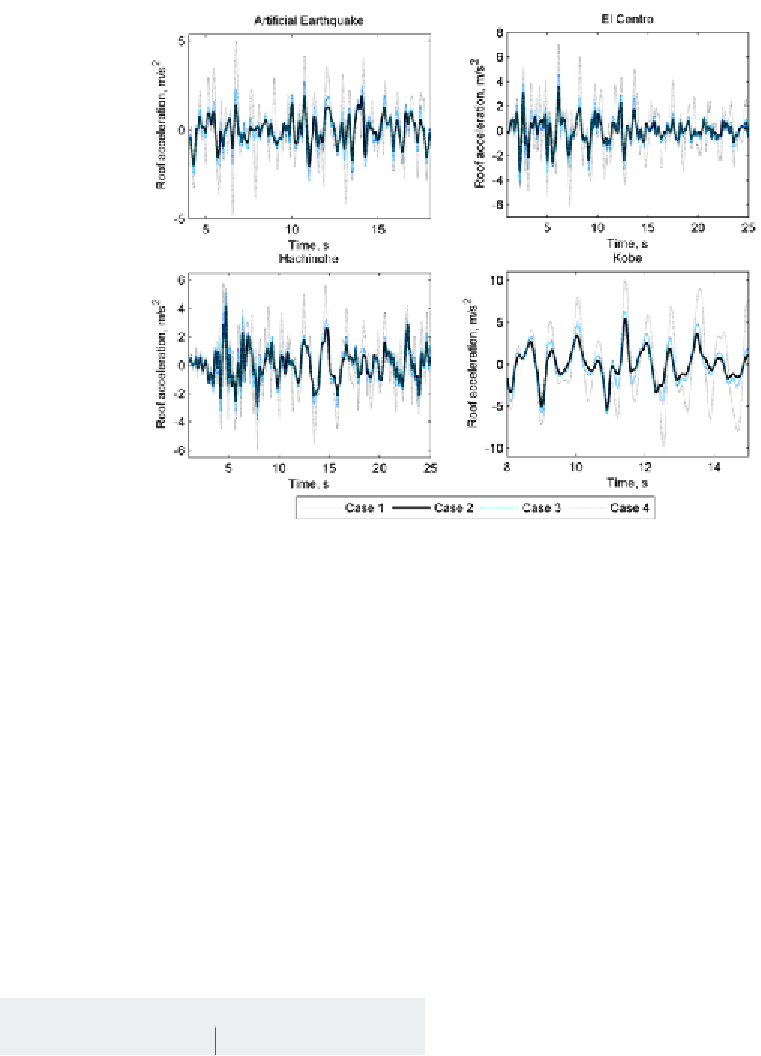Geology Reference
In-Depth Information
Figure 6. Roof acceleration time histories
of these devices connected to Chevron braces
(Case 3).
were connected to lever arm amplifiers to increase
control efficiency.
Analysis of the amplification and active con-
trolled devices placement on efficiency of a control
system was performed. A twenty-story framed
structure with active control systems including
different dampers configurations was simulated.
The response of the structure to an artificial white
noise ground motion was simulated in order to find
the optimal locations of control devices. Behavior
of the structure was further investigated under
natural earthquake excitations.
It was demonstrated that using an optimal lim-
ited set of active controlled devices yields almost
the same reduction in structural displacements and
accelerations like an optimal set of devices located
at all floors. It was further shown that connecting
the control devices to lever arms allows getting the
same improvement in structural behavior like by
connecting them to Chevron braces, but the first
configuration requires less devices and enables
CONCLUSION
The effect of a limited set of active controlled
devices on structural seismic response was stud-
ied. A method for finding the optimal location
of control devices yielding the desired structural
response by minimum cost was used. The devices
Table 2. Peak roof accelerations (m/s
2
)
Case
Ground motion
1
2
3
4
Artificial (white
noise)
5.0
2.1
2.8
2.8
El Centro
7.1
3.6
4.6
4.6
Kobe
10.1
5.5
6.2
6.4
Hachinohe
5.9
4.2
5.0
5.2











































Search WWH ::

Custom Search